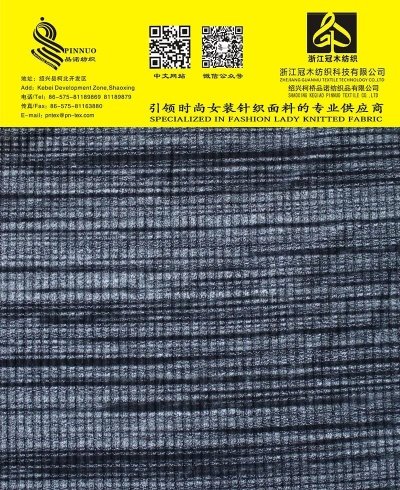Smart Textiles:Revolutionizing the Future of Fashion and Industrial Design
Smart textiles, a rapidly evolving technology, have the potential to revolutionize both fashion and industrial design. By incorporating advanced materials and sensors, these fabrics can transform the way we perceive clothing as both functional and aesthetically pleasing. Smart textiles are designed to adapt to our body temperature, moisture levels, and even environmental conditions, providing a comfortable and personalized experience. Additionally, they can be used to create more sustainable and efficient designs, reducing waste and promoting eco-friendly practices. As such, smart textiles hold great promise for future innovation in both fashion and industry, paving the way for exciting new possibilities in the realm of textile technology.
In the realm of textiles, traditional materials have long served as a staple for clothing and accessories. But what if we could redefine this relationship by incorporating advanced technologies that make our clothes smarter? That's where smart textiles come in. These innovative fabrics are designed to respond to changes in environmental conditions or human activities, providing a whole new level of comfort and functionality.
To understand smart textiles better, let's start by defining them:
- Intelligent Textiles: These are materials that can sense, analyze, and react to various factors, including temperature, humidity, pressure, or even body heat. They can also be programmed to change color, texture, or even emit light in response to specific commands or stimuli.
Now, let’s look at some examples of how these smart textiles are being used in different industries:
Healthcare Applications

One of the most promising areas for smart textiles is in healthcare. For example, smart underwear can monitor your heart rate, sweat level, or even detect signs of infection. This technology has applications not only in sportswear but also in everyday wear such as swimwear or pajamas.
Industrial Design
The fashion industry is increasingly recognizing the potential of smart textiles. For instance, some brands have started using conductive thread in their garments to create wearable devices like smartwatches or fitness bands. These garments can transmit data to a smartphone app, giving wearers real-time insights into their physical activity levels or sleep patterns.
Home Furnishings
Smart textiles are also finding their way into home furnishings. For example, curtains made from electroactive threads can automatically adjust their opacity based on the sun's position, providing natural lighting control while saving energy.
Automotive Industry
In the automotive sector, smart textiles are helping to improve safety and comfort. Car seats with integrated sensors can monitor the driver’s posture and alert the car's computer system if it detects an improper position. Additionally, some smart fabrics are being developed to provide protection against harsh weather conditions, such as UV radiation or extreme temperatures.

Smart Garments
Finally, there are also many exciting advancements happening in smart clothing. For example, some companies are developing breathable and moisture-wicking materials that can be controlled remotely using smartphones or voice commands. These materials could revolutionize athletic wear or even everyday clothing items.
Table: Summary of Smart Textile Technologies
| Technology | Application | Benefits/Disadvantages |
|---|---|---|
| Conductive Threads | Wearable Devices | Real-time health tracking, enhanced comfort & functionality |
| Electroactive Fabrics | Indoor/Outdoor Surfaces | Controllable transparency, energy efficiency |
| Biometric Sensors | Personalized Fit | Customized comfort, improved fit and functionality |
| RFID Technology | Access Controls | Fast, reliable identification |
| Shape Shifting Materials | Active Clothing | Change shape with movement |
| Electrostatic Dispersion | Air Filtration | Improved air quality in indoor spaces |
As you can see, smart textiles are rapidly evolving, and they hold tremendous potential in shaping our future. From improving our daily lives to driving innovation in industries like healthcare and entertainment, smart textiles are poised to transform the way we interact with the world around us. So the next time you pick up a piece of clothing or furniture, consider its smart capabilities – you might just discover something amazing!
Smart Textiles are a rapidly evolving industry that integrates advanced technology into traditional clothing materials. They are characterized by the integration of sensors, microelectronics, and other advanced materials to enhance the functionality and comfort of clothing. In this article, we will explore how Smart Textiles are defined and illustrate their application through case studies.
In the realm of Smart Textiles, there are several key components that define their nature. Firstly, Smart Textiles are designed to be wearable and versatile, able to adapt to different environments and activities. They can monitor users' health data, track their movements, and provide personalized experiences. Secondly, Smart Textiles often incorporate advanced materials that offer enhanced functionality and comfort. These materials may include conductive fibers, thermochromic materials, or biocompatible materials that can sense temperature, humidity, or other environmental factors.

To illustrate Smart Textiles, let's use an example of a Smart Clothing System. This system incorporates a range of sensors to monitor users' health data such as heart rate and movement patterns. The clothing itself is made from a blend of lightweight materials that are both comfortable and breathable. Additionally, the clothing is equipped with a touchscreen display that allows users to interact with their devices easily. This Smart Clothing System is an example of how Smart Textiles can be used in daily life for enhanced comfort and convenience.
Smart Textile Definition in Table Form:
| Component | Description | Example Application |
|---|---|---|
| Sensor Technology | Integrated with microelectronics to monitor various environmental factors such as temperature, humidity, pressure, and movement patterns. | |
| Advanced Materials | Use of lightweight materials that offer enhanced functionality and comfort such as conductive fibers, thermochromic materials, biocompatible materials. | |
| Personalization & Customization | Ability to adapt to different environments and activities based on user preferences and needs. | |
| Portability & Compatibility | Designed to be wearable and versatile, able to be worn on various occasions and activities. |
Case Study: Smart Textile in Practice
Case Study 1: Smart Clothing System
Imagine a smart clothing system that not only monitors users' health data but also provides personalized recommendations based on their activity patterns. This Smart Clothing System incorporates advanced sensors that monitor temperature, humidity, pressure, and movement patterns. The clothing itself is made from a blend of lightweight materials that are comfortable and breathable. Additionally, the clothing features a touchscreen display that allows users to interact with their devices easily. This Smart Clothing System is not only comfortable but also provides users with the convenience of personalized recommendations based on their activity patterns. It is an example of how Smart Textiles can be used in daily life for enhanced comfort and convenience.
Case Study 2: Smart Textile in Healthcare
In the healthcare industry, Smart Textiles are becoming increasingly popular for monitoring patients' health data such as blood pressure and heart rate. These Smart Textiles often incorporate sensors that can measure these vital signs remotely, providing doctors with real-time data that can help them diagnose conditions more accurately. This example shows how Smart Textiles can be used in areas where advanced technology is needed for enhanced patient care.
Conclusion
Smart Textiles are a rapidly evolving industry that integrate advanced technology into traditional clothing materials. They offer enhanced functionality and comfort by monitoring users' health data, tracking their movements, and providing personalized experiences. By using case studies and examples, we have explored how Smart Textiles are defined and illustrated their application through practical examples in daily life.
Articles related to the knowledge points of this article:
The Evolution and Impact of Textiles in Global Commerce
Chinese Textile Industrys Environmental Requirements:A Comprehensive Guide
Stylizing Success with the Timeless Legacy of Shishi Jinkai Textiles
Narishima Textiles:Crafting the Perfect Blend of Quality and Style
Global Trade Landscape of Textiles Between China and the US
Embracing Innovation in Textiles:The Story of Jinde Noble Textiles



